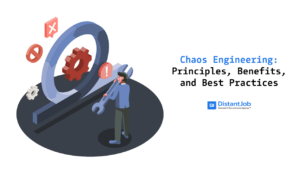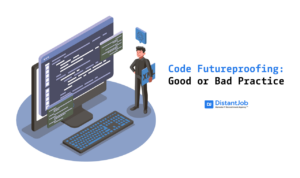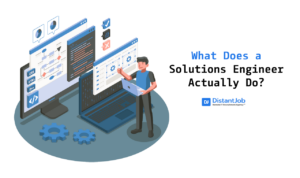How to start a software company from home? In the era of online business and massive joint ventures, it seems impossible to compete on the market without a Silicon Valley team of developers or a billion dollars investment.
Yet, Paul Jarvis and his team launched the company ofCourseBooks with only $1,125 capital. They spent this small initial capital for a website, catching fonts, stock photography, legal fees, and the first month’s expenses. And now, it’s one of the most popular student platforms to create notebooks and follow educational courses.
What did they do to break into the market? They found a problem to solve with a good idea, gathered a creative and dynamic team, and spent the budget in the right places.
Let’s look at how to start a software company and break into the market standing out from your competitors.
How to Start a Software Company with No Money
Starting a software development company doesn’t happen for free – even in the previous example, a minimum initial capital was necessary. Generally speaking, launching costs can range from $1000 without investors, to middle investment with crowdfunding and sponsorships, to high amounts with venture capital or seed funds.
If you’re wondering how to start a software company with no money, you’re asking the wrong question. There will always be fixed costs, such as:
- Website hosting and data storage fees.
- Specialized programs and management tools.
- Copyright, trademark, and patent costs.
- H.R., contracts, and employees.
The right question is how to optimize your budget to achieve the highest quality fast. For example, the primary variable of a software company’s costs is the team. How many employees do you need to launch your company? Can you hire remotely, or do you need to rent a workstation for some team members?
Let’s have a look at the 7 steps to start a software development company or a software startup to find out how you can optimize your costs, ensuring the best possible outcome for your new business
How to Start a Software Company from Home: 7 Steps to Follow

1. Find a Problem To Solve
The first step to starting a software company is having a problem to solve. The goal is to create a product that can make other people’s lives easier. For example, you want to start a medical company that provides software services to speed up waiting queues and simplify the booking process in hospitals. In this case, you have a visible problem to solve: improving hospitals’ services. Consequently, those who will benefit from your services the most are going to the hospital and medical personnel. So, you create a booking software that makes these processes more accessible and faster, standing out from your competitors.
Identifying challenges and who will benefit from your services is the first step to setting the goals of your new software company.
2. Market Research and Pricing Models
The second step is to conduct in-depth market research on pricing models and competitors.
The process of identifying your competitors, target audience, and sales options help you understand how the market works and where you can place your company. On a general level, there are three stages in which you can launch your software product:
Introduction Stage
In this case, there aren’t similar services on the market, which means either high or no demand for you. A successful example is Airbnb. Back in 2008, when they launched the first book accommodation in private houses, investors were skeptical about this traveling solution. But they entered the market during the 2006 crisis when people needed extra money, and now Airbnb is one of the most popular booking platforms worldwide. The same goes for Uber. Both companies provided new solutions creating a demand in the market that solved people’s problems.
Maturity Stage
Competitors have already gained revenues with similar services at this stage, but the market isn’t saturated yet, or other products don’t perform at their best. And you can enter the market by promoting a better service or making your pricing models more affordable. For example, when Kaltura, Inc. launched its video platform in 2006, other competitors already provided a platform to distribute and publish video content. So, they targeted specific industries like enterprise, education, and media, creating a booming market niche to sell their products standing out from other competitors.
Decline Stage
In this final stage, the market is full of services and offers similar to yours. If you are entering the market at this stage, you must be aware of the risks. For instance, Rdio, Inc. launched a music-streaming platform with a subscription in 2010. Despite the company being active in 85 countries, it couldn’t stand major competitors like Spotify. The company declared bankruptcy not because of poor quality service but because of an oversaturated market.
Identifying the stage in which you are entering the market is crucial to isolate your competitors and find a way to differentiate your product – for quality and, more importantly, pricing models. And create a loyal customer base audience. Remember that SaaS products usually work on a subscription-based pricing model. If you want your customers to community monthly or annually to your services, you must enter the market answering their exact needs at the right time.
3. Make a Plan And Set Goals
No one can start a software company without a business plan. So, the third step is to write down a one-page pitch with your company mission, your solution to a problem, and who will benefit from your services. After that, you can expand this presentation, specifying:
Strategy
- Description of your business, philosophy, and mission.
- How your product/service will solve a specific problem in the industry.
- Isolate your target market and the stage in which you are entering.
- List your competitors, specify how your company is different for quality and performance
- Explain your pricing model: why it is more affordable or expensive than competitors, its availability, and how it sustains over time.
Tactics
- Specify sales channels based on your target audience and expected revenue for each.
- Present marketing and ads campaigns, explaining how they will make your services stand out in the market.
- List key partners, sponsors, and resources.
- Present your teams and their roles, explaining how each is an asset for your company’s success.
Business Model
- Sales forecast.
- Overview of budget and hiring expenses.
- Primary revenue stream and cash flow.
Schedule
- Outline of the action plan, including schedule, tasks, and goals.
- Workflow map with dates, responsibilities, and budgets.
P.S.: You can use software like LivePlan to draft your initial business plan faster or take inspiration from business plan templates in your industry.
4. Prototype and Test
The fourth step is prototyping and testing. After all, it won’t matter at which stage you will enter the market if your software doesn’t work or doesn’t satisfy your users’ needs. The best time to test your software is when you get to the MVP (Minimum Viable Product) stage. It means that the software is good enough to enter the market, but it needs adjustments from users’ feedback and usability tests.
A prototype or MVP should include:
- Tutorial and educational videos
- Wireframes
- Mockups
- Landing pages
Creating a prototype is crucial to make improvements earlier on, and attract more venture capital and loans before launching.
5. Define Your Brand
The fifth step is defining your brand. You need a recognizable design to make your quality product memorable for your investors and customers. Here is what you have to include to define your brand and launch your product on the market:
- Recognizable layout and style
- A logo and design representing your mission.
- Attention to the domain name.
As a remote software company, your online design is like a business card for your business, and it can make a difference with your competitors.
P.S.: If your budget is tight, you can start with design tools like Truic’s free logo Generator (no email or sign up) or Premium Logo Maker. Tools like Canva are also a great option to create engaging and customized visuals to personalize your software company.
6. Legal Officialization
Starting a remote software company allows you to create an international and dynamic team, but you need to legally set up your company and deal with tax regulation, first.
Here is what you need to do to legalize a software company working from home:
- Define your business structure
- Register your business name
- Get business insurance
- HR and employee’s contracts
7. Financing and Funding
Finally, it’s time to get funding for your company. You can crowdfund, bootstrap your startup, pitching investors or venture capitalists for financing based on your target. Just consider that the first two options leave you more freedom and control over your company. When you join venture capitalist or welcome investors, you might need to give up some freedom reposting every step you take and how you invest the money.
Whether solution will work for you, here is what you need to do when asking for financial aid and fundings:
- Prepare a more detailed forecast.
- Obtain necessary permits and licenses.
- Collect sales tax on services you provide.
- State and local business licensing requirements.
Skills Needed to Start a Software Company
These 7 steps are a guide to learning how to start a software company. However, there is something more important than brand and funding: the quality of your developers. If you don’t build a team with excellent, creative, and skilled developers, your startup or development company won’t ever stand out from competitors dominating the market.
Here is a list of the fundamental skills you should seek when hiring remote developers and programmers to launch a software company:
1. IT Architecture refers to principles and guidelines directing the process of acquiring, building, and modifying IT resources, including equipment, software, communications, development methodologies, modeling tools and organizational structures.
2. Cloud Security is the procedures and tools securing cloud computing environments against cybersecurity threats.
3. Programming Mobile Apps and Websites depends on the language you use to build a software or app.
4. UI/UX Design is about creating interactive interfaces to engage your customers and improve their user experience while using your software.
4. Data Analytics is the process of analyzing raw data to isolate patterns and trends, adjusting your product to users’ feedback.
5. Project Management includes everything related to project planning, scheduling, resource allocation, and change management. The scope is to control costs and budgeting, quality performance, and documentation accuracy.
Hire Top Talented Remote Developers And Start Your Software Company From Home
Launching a software company requires a budget, careful research, and lots of effort. But there is good news! DistantJob can help you find vetted and carefully selected software developers worldwide, saving your money. How? We are an IT headhunting agency, and we know in which geographical area you can find top-quality developers at a fraction of the cost – the best benefits of remote work, isn’t it?
We can help you save budget on the hiring process and legal matters, as our HR takes care of contracts and taxes before and after you hire with us! Starting a software company is challenging and requires lots of effort. But we can help you create the best IT international team at a fraction of the price, and you can focus on your product and business plan. And, with the right developers, you will have investors for your products and people waiting for your services in no time. Contact us!




